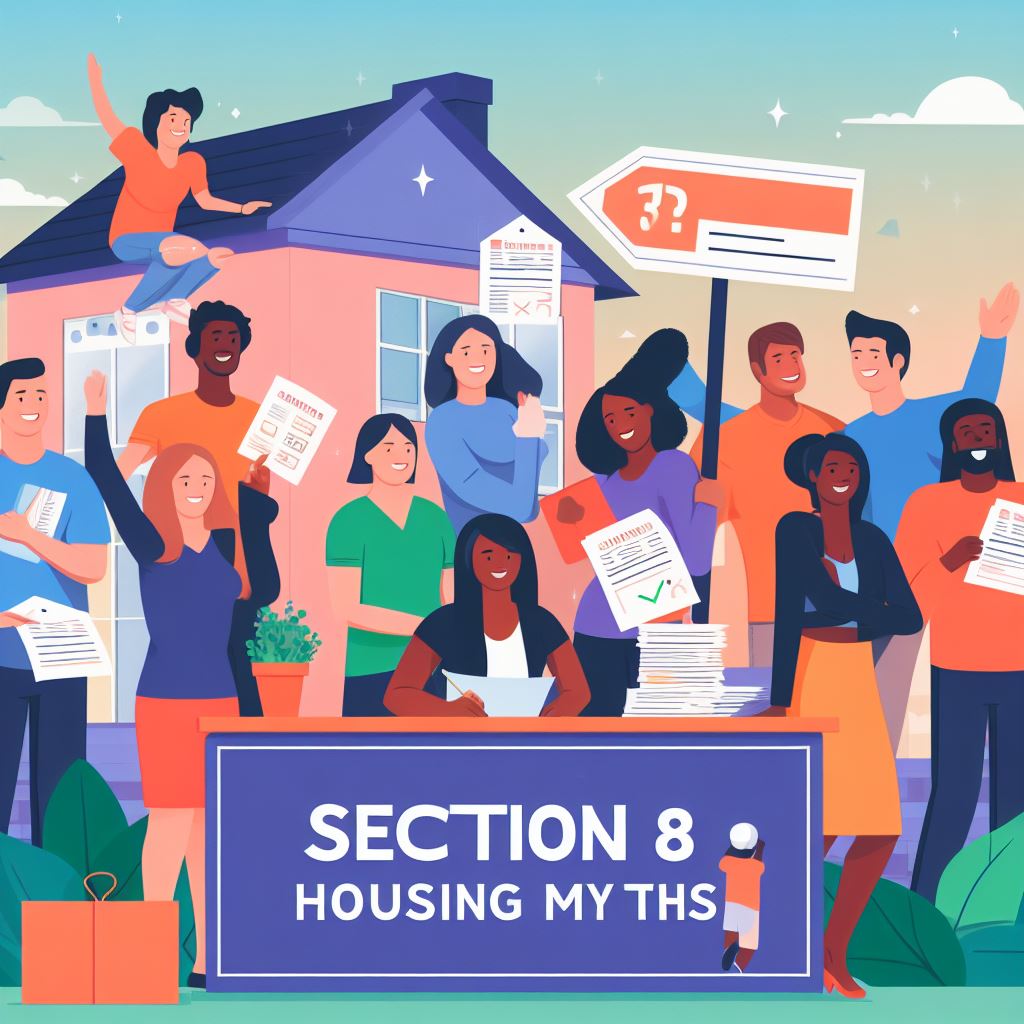Debunking Section 8 Housing Application Process Myths

Are you ready to uncover the truth behind the Section 8 housing application process? Don’t be fooled by common misconceptions.
In this article, we will debunk the myths and shed light on the reality of applying for Section 8 housing. From the complexity of the application process to the misunderstandings about required documentation, we’ll provide you with the facts you need to navigate this often misunderstood system.
Get ready to separate fact from fiction and take control of your housing journey.
Key Takeaways
- Section 8 assistance is available to all eligible low-income individuals and families, regardless of family status, employment status, or citizenship.
- The Section 8 application process requires extensive documentation, including proof of income, identification documents, and rental history.
- The Section 8 housing program operates on a fair and equal basis, with applications reviewed and assessed based on eligibility criteria.
- Waitlists for Section 8 housing can be long, so it’s important to keep information updated and be patient throughout the process.
Common Misconceptions About Section 8 Eligibility
If you believe you may not be eligible for Section 8 housing assistance, it’s important to debunk some common misconceptions.
One common misconception is that only families with children can apply for Section 8. This isn’t true. Section 8 assistance is available to all eligible low-income individuals and families, regardless of whether or not they’ve children.
Another misconception is that you have to be unemployed to qualify for Section 8. In reality, both employed and unemployed individuals can qualify for assistance. The program is designed to help those with low incomes, regardless of their employment status.
Additionally, some people believe that you must be a U.S. citizen to be eligible for Section 8. While citizenship is one way to meet the eligibility requirements, non-citizens who are eligible immigrants can also apply for assistance.
It’s important to understand that Section 8 is a program that aims to provide safe and affordable housing to those in need, regardless of their family status, employment status, or citizenship.
The Truth About the Complexity of the Application Process
Navigating the Section 8 housing application process can be a complex and daunting task, but with the right information and guidance, you can successfully apply for the assistance you need. Here are three key truths about the complexity of the application process that will help you better understand what to expect:
- Extensive Documentation: The Section 8 application requires you to provide detailed documentation about your income, assets, and household composition. This includes pay stubs, tax returns, bank statements, and identification documents for each member of your household. Gathering and organizing these documents can be time-consuming, but it’s crucial for a successful application.
- Eligibility Determination: The process involves a thorough examination of your eligibility for Section 8 assistance. This includes verifying your income, conducting background checks, and assessing your current housing situation. It’s important to be honest and accurate in your application to avoid delays or disqualification.
- Waiting List: Due to the high demand for Section 8 housing, many areas have waiting lists. After submitting your application, you may have to wait for an extended period before receiving assistance. It’s essential to stay in contact with the housing authority and update your information regularly to ensure you remain on the waiting list.
Understanding these complexities will help you navigate the Section 8 housing application process more effectively.
Now, let’s debunk the myth of favoritism in Section 8 housing.
Debunking the Myth of Favoritism in Section 8 Housing
Now let’s address whether there’s any favoritism in the Section 8 housing application process. It’s important to dispel this myth and provide clarity on how the process actually works.
The Section 8 housing program is designed to provide assistance to low-income individuals and families, based on their financial need, not personal connections or favoritism. The program operates on a first-come, first-served basis, ensuring fairness and equal opportunity for all applicants.
Each application is thoroughly reviewed and assessed based on eligibility criteria, such as income, family size, and housing needs. The housing authorities responsible for managing the Section 8 program strive to maintain objectivity and fairness throughout the application process.
They follow strict guidelines and regulations set by the U.S. Department of Housing and Urban Development (HUD) to ensure that all applicants receive fair and equal treatment. By addressing this myth, it becomes clear that the Section 8 housing application process isn’t influenced by favoritism, but rather by the individual’s eligibility and need for assistance.
Transitioning into the subsequent section, let’s now address some common misunderstandings about the required documentation for the application process.
Addressing Misunderstandings About Required Documentation
To clarify any confusion, let’s address the required documentation for the Section 8 housing application process. Understanding what documents are needed is crucial to ensure a smooth and successful application.
Here are three important pieces of documentation that you’ll need to provide:
- Proof of income: This includes documents such as pay stubs, tax returns, or a letter from your employer stating your income. It’s essential to demonstrate that your income falls within the eligible limits for Section 8 housing.
- Identification documents: You’ll need to provide proof of your identity, such as a driver’s license, passport, or social security card. These documents are necessary to verify your identity and ensure that you’re eligible for Section 8 housing.
- Rental history: It’s important to provide documentation regarding your rental history, including previous addresses and contact information for your previous landlords. This helps to establish your rental background and shows that you have been a responsible tenant in the past.
The Reality of Waitlists and Timelines in Section 8 Application Process
Understanding the waitlists and timelines is crucial when applying for Section 8 housing. It’s important to have realistic expectations and be aware of the process involved. The reality is that waitlists for Section 8 housing can be long, often spanning several years. This is due to the high demand for affordable housing and limited availability of vouchers. The length of the waitlist can vary depending on factors such as location, funding, and the specific housing authority. It’s essential to contact your local housing authority to get accurate information about the current waitlist and estimated wait times.
Once you’re on the waitlist, it’s important to keep your information updated. Changes in income, family size, or contact information should be reported promptly to ensure that your application remains active. It’s also important to be patient and understand that the process takes time. The housing authority will notify you when your application reaches the top of the waitlist and a voucher becomes available. At that point, you’ll go through the final steps of the application process, including a housing inspection and signing the lease agreement.
Frequently Asked Questions
Are There Any Income Limits for Section 8 Eligibility?
Yes, there are income limits for Section 8 eligibility. These limits vary depending on factors such as family size and location. It’s important to check with your local housing authority for the specific income limits in your area.
Can I Apply for Section 8 Assistance if I Have a Criminal Record?
Yes, you can still apply for Section 8 assistance even if you have a criminal record. The application process evaluates various factors, including the nature of the offense and how recent it occurred.
Is It True That Section 8 Housing Is Only Available in Certain Neighborhoods?
Is it true that Section 8 housing is only available in certain neighborhoods? Nope, that’s a big ol’ myth! Section 8 housing is actually available in a variety of neighborhoods, giving you more options to find a place that suits your needs.
Do I Need to Have Children to Be Eligible for Section 8 Assistance?
No, you don’t need to have children to be eligible for Section 8 assistance. The program is open to individuals and families, regardless of whether they have children or not.
Can I Apply for Section 8 if I Am Already Receiving Other Government Benefits, Such as TANF or Snap?
Yes, you can apply for Section 8 even if you receive other government benefits like TANF or SNAP. These benefits don’t disqualify you from applying for and potentially receiving Section 8 assistance.



